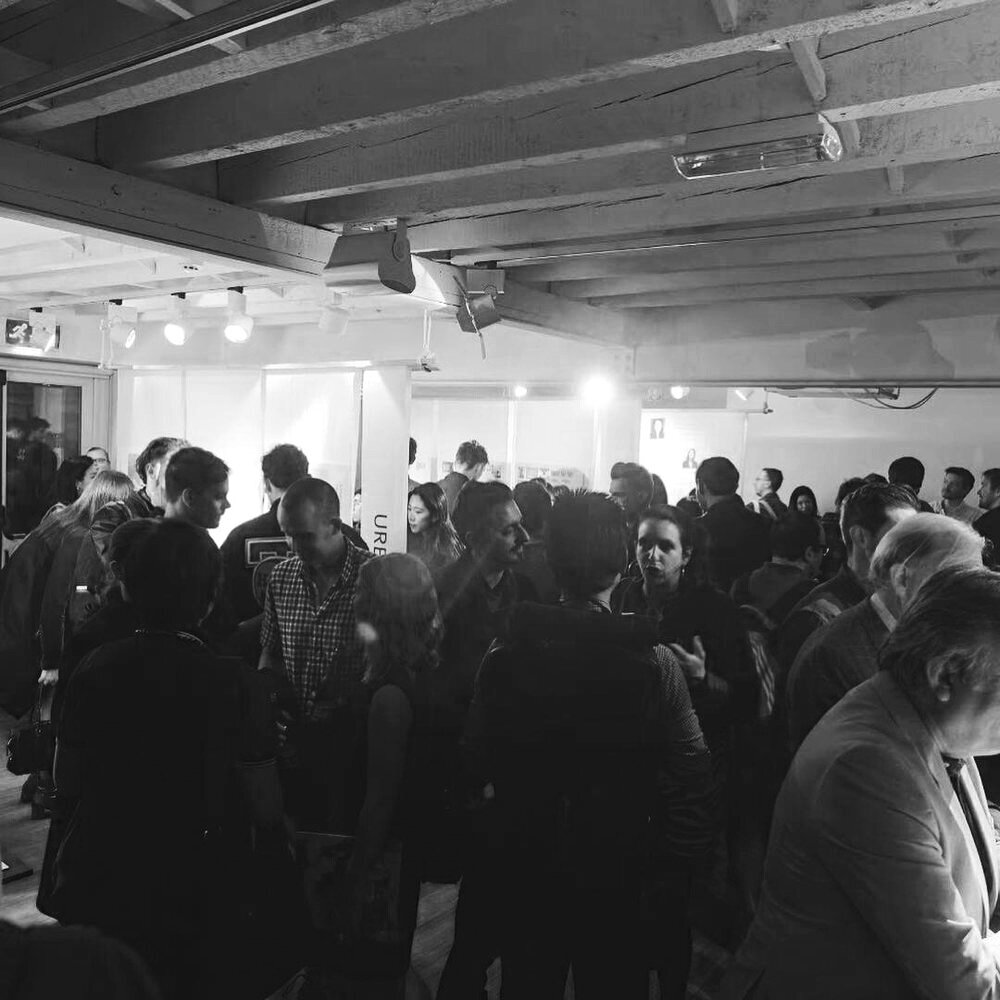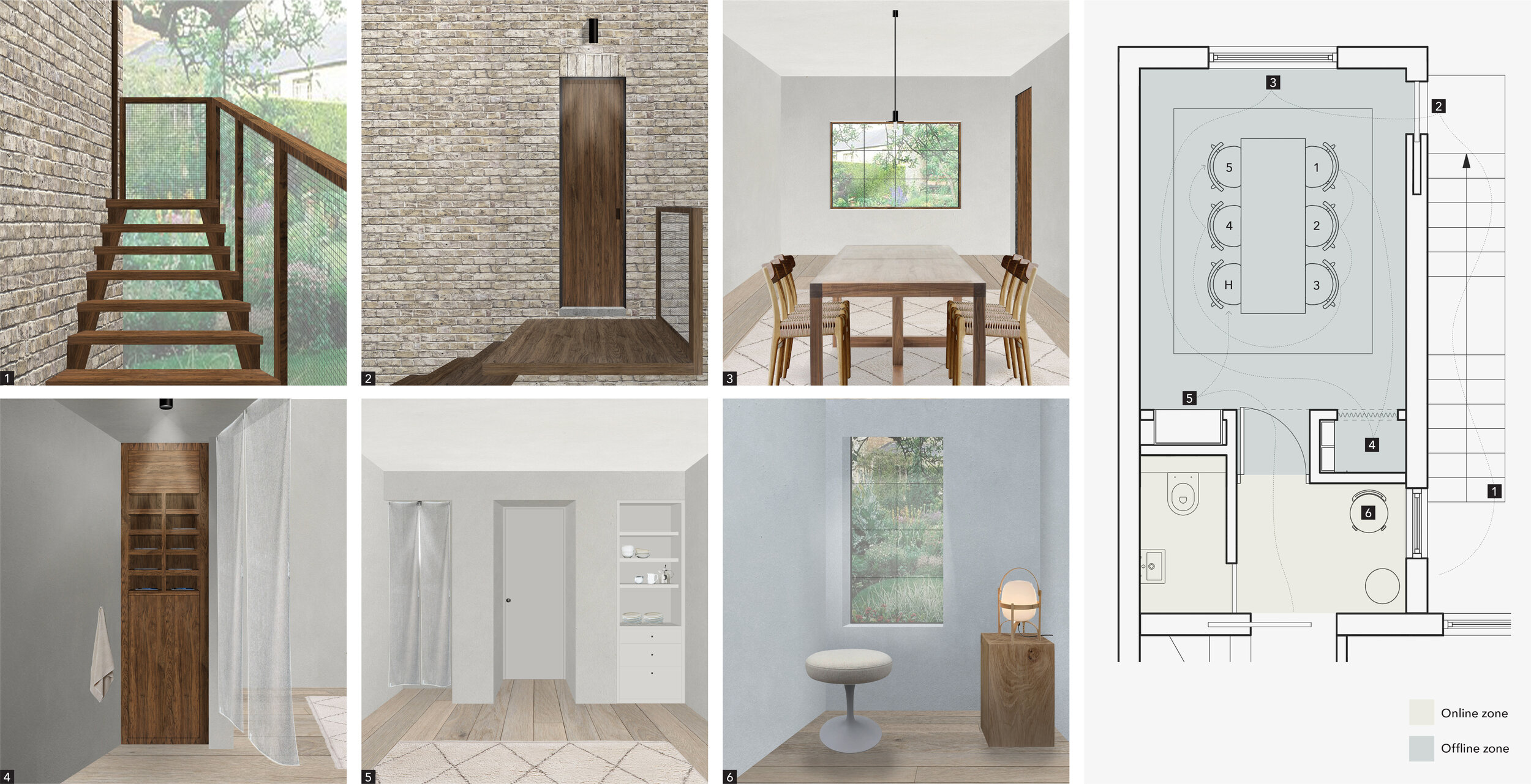Millennial Dining
A conceptual design proposal based on studying a Japanese ritual. This was part of a group exhibition “Kaishaku” for Japanese Junction London on Oct 4th, 2018 to Nov 2nd, 2018 at Toto gallery London.
Design in collaboration with Ryo Tada.
Photos by Emi Sano and Razvan Andrei
Digital-age ‘Wabi-sabi’
‘Wabi-sabi’ is a distinctive Japanese idea which celebrates the beauty and appreciation of imperfection. ‘Wabi’ refers to the inclusive attitude of embracing imperfection as beauty, a celebration of accidental or unexpected moments. ‘Sabi’, refers to the beauty of age, appreciating stains, dirt and patina that’s present through time. This concept is more widely associated with the Zen philosophy that happiness comes from celebrating all aspects of life, denoting a practice of embracing life as it happens and staying connected to the real world. This unique view of life has led us to think about our current age with technologies. Inevitable,
most people are now connected everywhere and anytime. Have efficiency and speed incidentally become our barometer to happiness? Is it irrational for us to treat analogue as a luxury, or to crave being disconnected to all things?
Our view on this is not to reject either digital or analogue, but to find a balance. We define this as our search for ‘digital wabi-sabi’. We would like to propose solutions where one can fully appreciate the activity itself through brief moments of disconnections. We would like to stay connected; but not distracted from the digital, thereby defining a ‘wabi-sabi’ way of life in the 21st century.
Image by Ryo Tada
Japanese etiquettes
As reference for our proposal, we investigated two of the most notable Japanese rituals and its architecture; an Onsen (Japanese hot-spring) and a Japanese tea room, both of which are known for the practice of strict ‘etiquettes’. By deducing the main concepts of the two rituals, we envision the application on a modern setting, an attempt to find out how the analogue can best co-exist with the digital.
When analysing Japanese rituals, we try to understand it by extracting the procession of its architectural journey and identifying the significance of elements which defines the ritual. ‘Onsen’ for example is a destination for leisure and
relaxation. The rituals itself is a prescribed set of procedures of how one can achieve relaxation, by following essential steps leading onto a hot spring. Key elements of it includes the journey of preparation, the winding path to the hot spring, the surrounding views and the ‘Kaisekryori’ meal that follows. The other ritual is the teahouse, which performs the process of making tea with supreme precision. The layout of the space is designed around the ceremony to emphasize the importance of each process of making tea. Key elements include the journey, the cleansing, the art, size of the room, orientation and the manners of the guests.
Modern home-dining
The initial idea was based on a debatable conflict of having mobiles phones on the dinner table. When is it acceptable to check your phone during a meal? Is it polite to glance your phone while other guests are chatting about their day? Does placing your phone faced up on the table make you less engaged as a dining guest? These are all questions which lead me to rethink the way of a modern dining. Taking the Japanese tea room as inspiration, I’ve applied the same formality of space to emphasize the ritual of a dining experience. The proposed site is a typical Victorian house with an extension to the upper floor. The public and private areas are divided front to back, with an emphasis of the garden view given to guests. The dining room is located on the first floor to accentuate its significance. The room is accessed through the kitchen and living room to an external staircase, which requires guest to go outside before entering the dining room, thus creating a transition zone prior to the ritual experience of dining.
Etiquettes of dining
Entering into the dining room, guest should immediately feel a sense of calmness. All decorations are paired back to give way to the performance of dining. Guests enter the room in solo through a narrow doorway and are orchestrated to walk around the room sequentially to appreciate the view of the garden, store away their mobiles devices and clean their hands before arriving to their seat. An even number of guests would face one another across from the table for ease of communication. The host will typically sit closest to the host entrance and the storage shelf to help prepare the table. Tableware are passed on from the host and to the participating guest where prepping the table becomes a communal experience. The dining room is an off-line zone where all devices are disconnected. While guest need to make an emergency call, they can step out to the break out room, where calls can be made without disturbing the dining experience.







